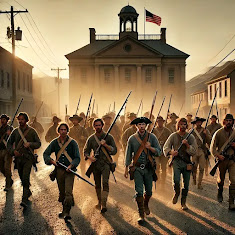Most 19th century records are simple. Names entered into large books. Lines written by clerks who never imagined anyone would read them again. But every so often, the ink on the page tells a larger story. The slander case involving Delilah Pickens Morehead (wife of Alexander Morehead) in Fairfield County, Ohio is one of those moments.
In the early 1830s Alexander and Delilah were living in Fairfield County, raising a blended family and finding their footing in a close rural community. Life in these neighborhoods depended on trust. People traded together, worshiped together, and relied on one another in daily routines. Your name was one of your most valuable possessions. When a person’s character was questioned, the consequences spread quickly.
At some point in 1831, Jonathan Norris and his wife Sarah spoke words about Delilah that crossed the legal threshold for slander in Ohio. According to the court declaration, the Norrises were accused of telling others that Delilah lived a lewd and immoral life, that she was unchaste and guilty of fornication, that she carried on lascivious conversations, and that her behavior was indecent enough that neighbors suspected her of immoral conduct. They also allegedly claimed she was untrustworthy in the community and someone whom “good and worthy” citizens ought to avoid.Ohio law also required the Moreheads to meet a very high bar. The plaintiffs had to prove the exact words spoken, where the words were spoken, in front of which witnesses, that the words were false, that they caused measurable financial harm, and that the defendants acted with malicious intent. Most slander suits failed under these requirements. Only the most serious accusations had any chance of success.The Norrises denied everything in the October Term 1831. They formally entered a plea in the Court of Common Pleas stating they were not guilty of the grievances the Moreheads described. Because the statements were made about a married woman, Delilah was required by law to file the suit together with Alexander. This also shows that Alexander stood with her in seeking a public answer.
The Norrises asked for a jury. Nine men from the county were sworn in and heard the evidence. The words spoken in barns, fields, or front yards no longer survive, but the reaction of the jury does. After listening to the testimony, they found Jonathan and Sarah Norris guilty in the form described by the Moreheads. The court awarded Alexander and Delilah forty five dollars in damages and ordered the Norrises to pay all court costs. In a community where everyone knew one another, this verdict said plainly that the jury did not believe the accusations made against Delilah.Not long after this period the Moreheads moved northwest into Van Wert County, where they appear in the 1840 and 1850 censuses. The slander case remained behind in the courthouse records of Fairfield County. It is only a few pages in a long ledger, but it lets us see something of Delilah’s life. She was confronted with serious accusations. She chose to answer them directly. She brought the matter before her community and a jury cleared her name. It is one of the rare moments where her voice and her experience emerge clearly through the surviving documents.
Sources
Fairfield County Court of Common Pleas, Page 49, Image Group 115937731.
Fairfield County Court of Common Pleas, Page 51, Image Group 115937731.





















